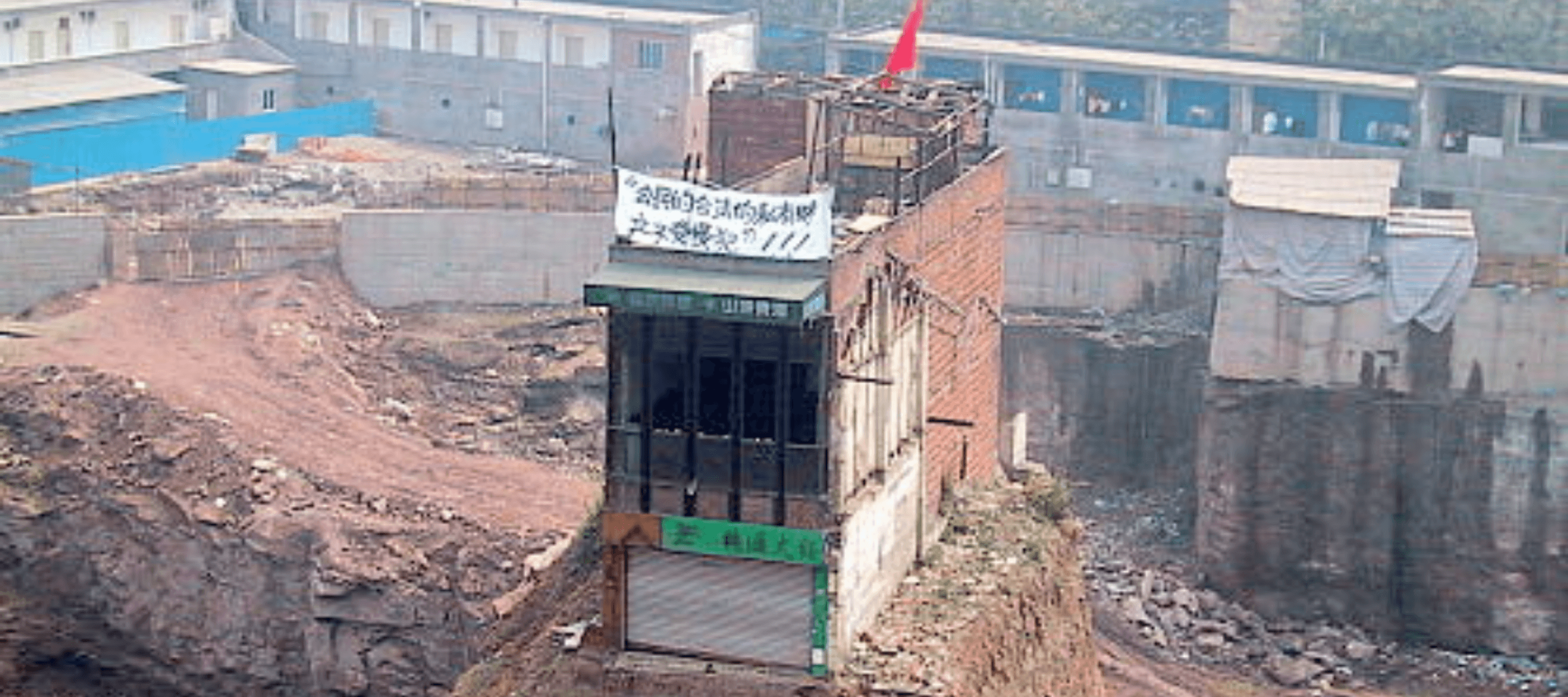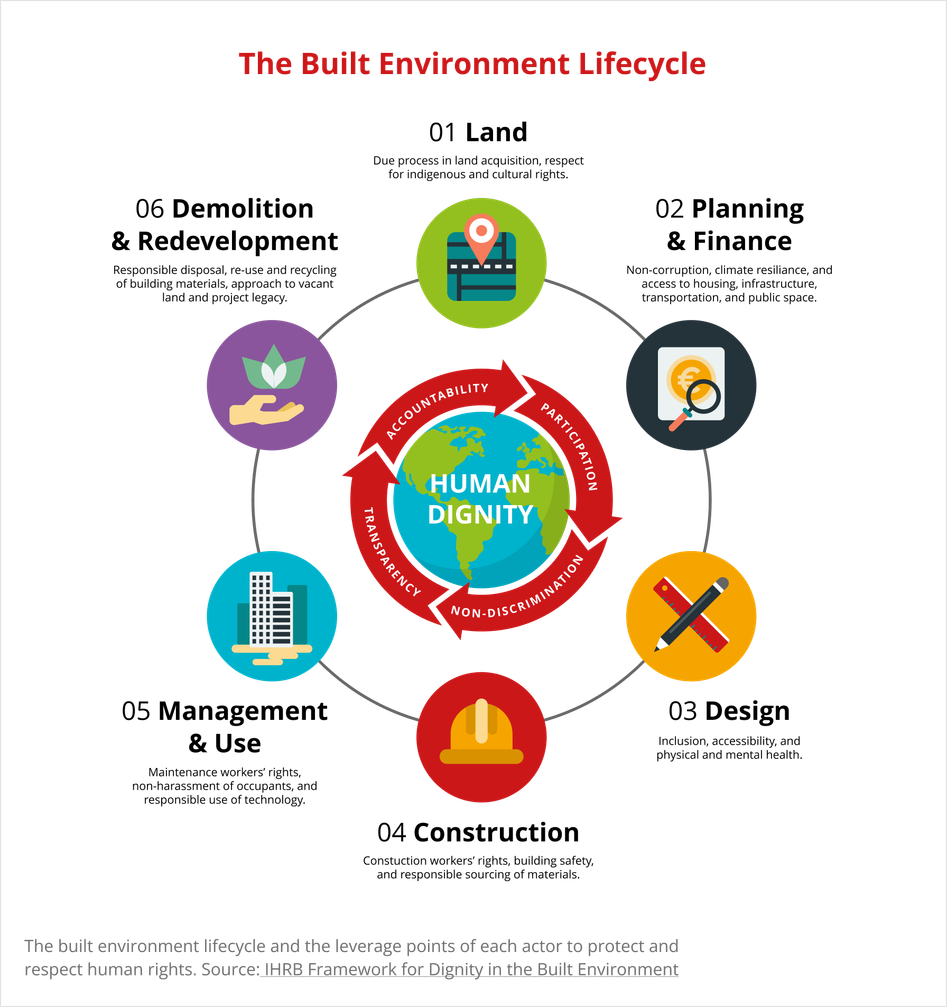Land rights in the built environment
9 September 2021

The built environment begins and ends with the question of land: who owns it, its use, and who has access. The land acquisition and planning processes determine the trajectory of economic development, of social opportunity, and of environmental protection.

Did you know that population growth and urbanisation are projected to add 2.5 billion people to the world’s urban population by 2050? This puts huge pressure on land, which is a finite resource – not only within urban areas but also the surrounding rural areas on which they depend.
Due process in land acquisition
This pressure for access to land creates the risk for companies to be complicit in forced evictions and the displacement of local populations. Those most at risk of evictions are frequently those with the least power to challenge it – the poorest and most marginalized members of society, particularly those living in informal settlements or in low-cost housing. Displacement also extends well beyond forced evictions. In multiple cities around the globe low and middle income residents are increasingly displaced from city centres as they are priced out of their homes.
Indigenous and cultural rights
Land is also inextricably connected to indigenous and cultural rights, in both rural and urban areas. Free Prior and Informed Consent (FPIC) is an important international standard that gives indigenous peoples the right to give or withhold consent to a project that may affect them or their territories.
For further context and examples, read 'Land' in “Dignity by Design: Human Rights and the Built Environment Lifecycle”, pages 30-33.
How to take action to ensure respect for human rights at the land stage of the built environment lifecycle?
The Framework for Dignity in the Built Environment provides guiding actions to ensure respect for human rights at each stage of the lifecycle, linked to international standards and Sustainable Development Goals. The Framework also includes overarching recommendations by actor: for national and municipal governments; finance; architects; construction and engineering companies; and technology companies.
The guiding questions below are globally-applicable and locally adaptable and can be used to inform decision-making that is grounded in human dignity: managing risks, and maximizing opportunity.
- Throughout the land acquisition process, have measures been taken to avoid infringing on the human rights and legitimate tenure rights of others, in accordance with international guidelines
- Has due diligence been carried out to ensure transparency and accountability in the land acquisition process, and the appropriate valuation of land?
- Is there a risk of forced evictions taking place, and if so what measures have been taken to prevent them from happening? Forced evictions are defined by the UN as: "The permanent or temporary removal against their will of individuals, families and/or communities from the homes and/or land which they occupy, without the provision of, and access to, appropriate forms of legal or other protection"
- Has there been an assessment of indigenous and cultural rights that may be affected, and measures taken to mitigate harm?
- If there are risks to indigenous peoples, does the project ensure Free, Prior and Informed Consent, in line with the UN Declaration on the Rights of Indigenous Peoples?
International standards and guidance
- UN Declaration on the Rights of Indigenous Peoples, with provisions on “Free, Prior and Informed Consent”
- Guiding Principles on Security of Tenure for the Urban Poor (OHCHR)
- Voluntary Guidelines on the Responsible Governance of Tenure (FAO)
- "Forced evictions” (OHCHR and UN Habitat guidance)
- "Basic principles and guidelines on development-based evictions and displacement" (OHCHR)
International Finance Corporation (IFC) Performance Standards
Credit: These introductory pages to the six stages of the built environment lifecycle were created by IHRB with partners in the Coalition for Dignity in the Built Environment, and with pro bono support from Corrs Chambers Westgarth.



